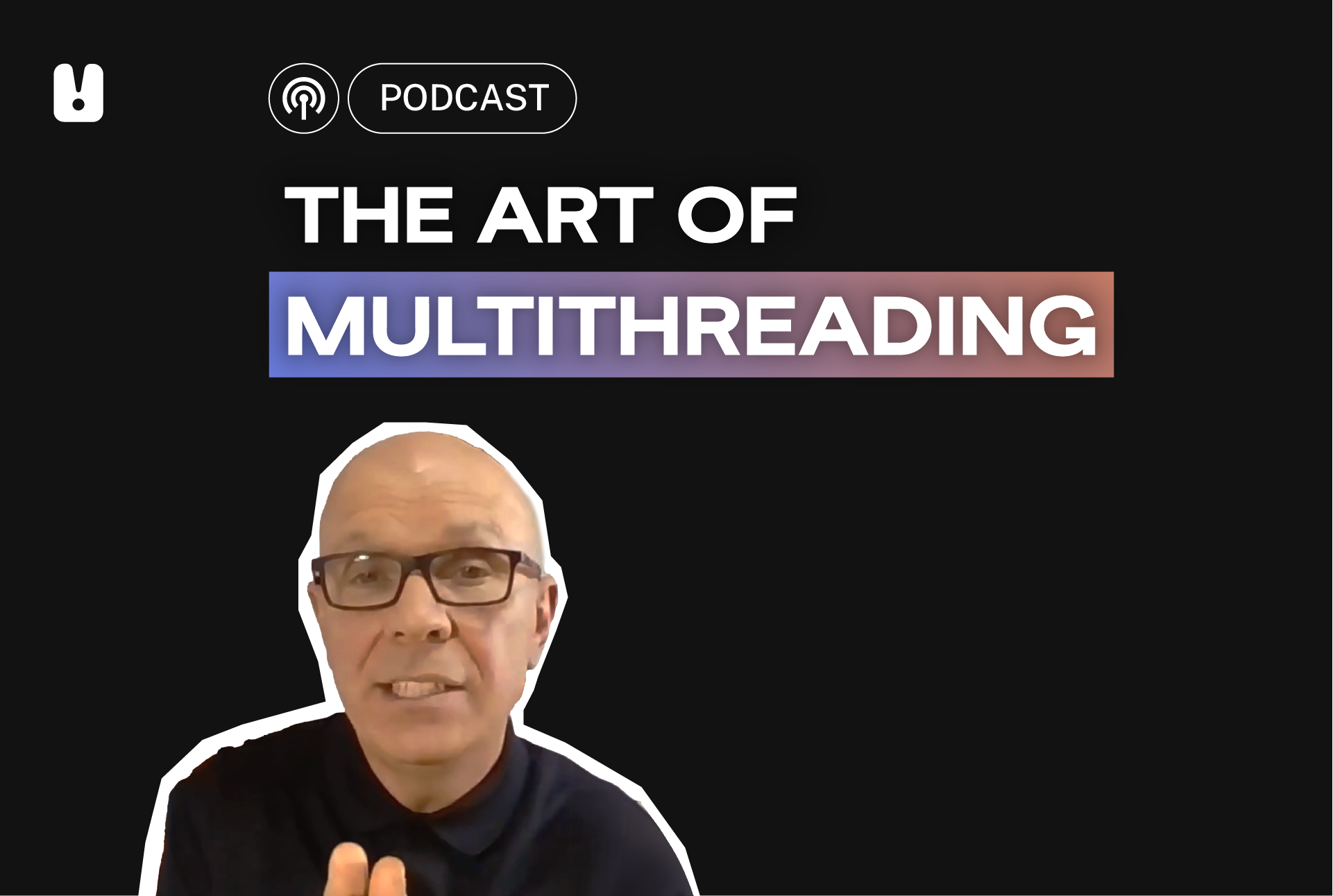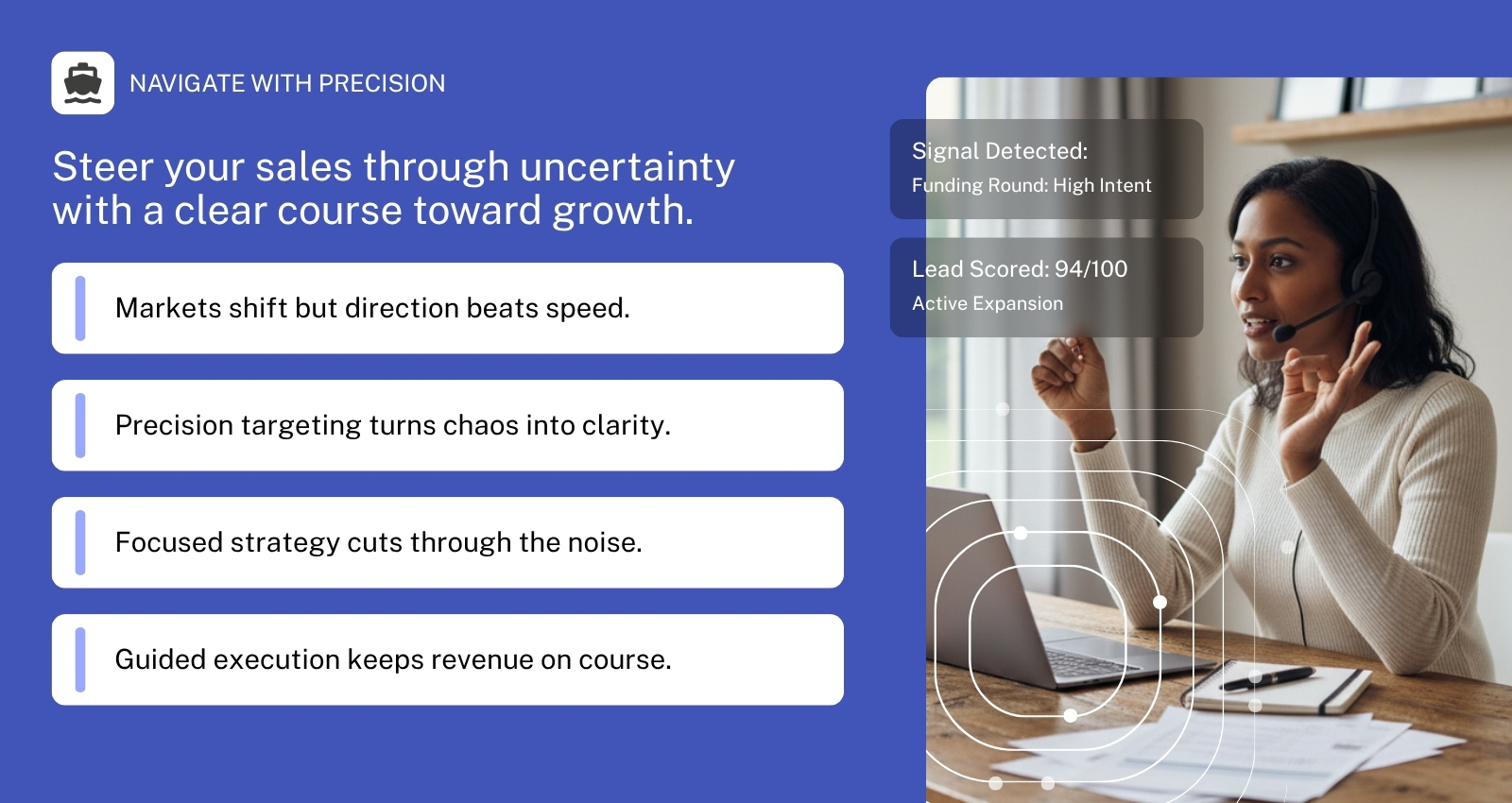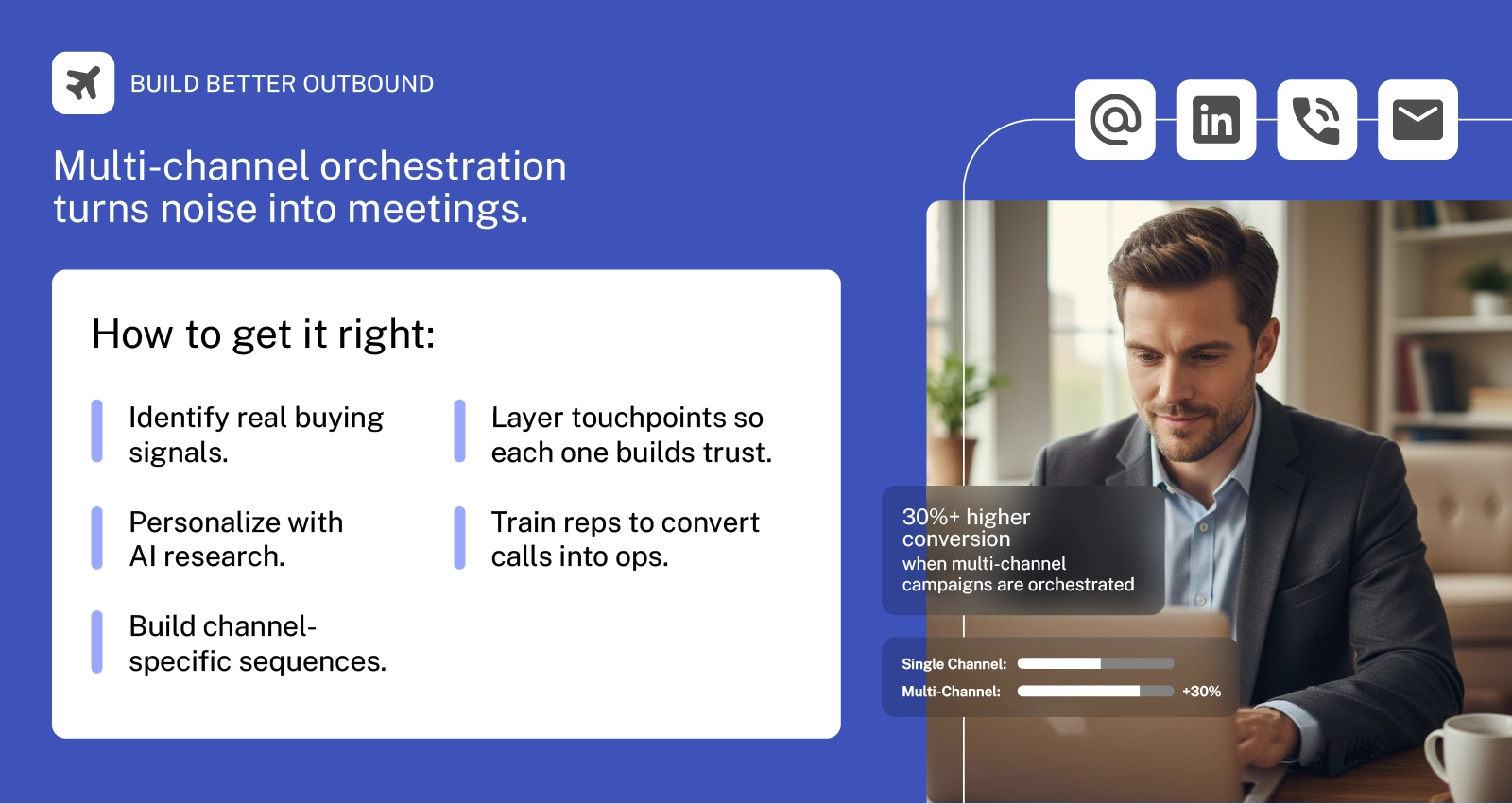

The Art of Multi-Threading
In our second episode of B2B Outbound we're joined by Kevin Dixon, the founder of the multi-threading platform Boxxstep.
In this podcast, we reveal the secrets to mastering multi-threading - the key to engaging multiple stakeholders, shortening sales cycles, and closing more deals.
Discover proven strategies to identify and influence key decision-makers, build rapport with the buying committee, and provide value at every touchpoint.
Whether you're a sales rep, manager, or executive, this podcast will equip you with the multi-threading techniques you need to conquer complex B2B sales and boost your win rates.
What is Multi-Threading?
Winning deals requires more than just engaging with a single decision maker. The typical buying group for a complex B2B solution involves 6 to 10 decision makers. To navigate this complexity and increase win rates, top sales teams are turning to multi-threading.
Kevin, a seasoned sales expert and founder of Boxstep, defines multi-threading as "the process of identifying, engaging, and understanding the wider buying group to facilitate a favourable change decision in your favour." In essence, it's about working out who's involved, building rapport with them, and influencing their decision.
Why Multi-Threading Matters:
- Deals are getting more complex As Kevin notes, "there are two types of sales, transactional or complex enterprise. Transactional might be something that you sell with a pretty, pretty short closed period, you might not have to engage with too many people. However, even for a smaller deal, there may be 5-10 people involved in the buying decision." The more complex the deal, the more critical multi-threading becomes.
- Deals are taking longer to close "Sales cycles have got longer and more no decisions. Win rates are down," Kevin observes. "Largely because of the growing number of people involved in the decision." By engaging the wider buying group early and often, sales teams can shorten sales cycles.
- Avoiding deal-killing surprises Without multi-threading, "you try and forecast something and additional stakeholders come into the deal later on," Kevin warns. "Salespeople don't want to be involved, they don't want to engage with procurement or legal. This is outside of our comfort zone. But if you embrace them early, there's a greater chance that you're going to actually get the momentum, the deal will happen quicker and you'll win it."
How to Implement Multi-Threading:
- Identify the buying committee The first step is understanding who is involved in the buying decision. Kevin recommends "working out who's involved, finding out who they are, having some good communication with them, building some rapport with them." Tools like LinkedIn Sales Navigator and Gong can help identify key stakeholders.
- Engage with personalised outreach Once you've identified the buying group, it's time to engage. But as Kevin cautions, "do not have a vanilla approach." Instead, tailor your messaging to each persona's unique challenges and priorities. Video prospecting tools like Vidyard can help create personalised outreach at scale.
- Enlist the help of champions As you build relationships with stakeholders, look for internal champions who can make introductions and influence others. "If you've got an advocate, you've got a champion, then they'll proactively give you people to reach out to," Kevin advises.
- Provide value at every touchpoint Share content and insights that help each stakeholder achieve their goals. "The real thing is, is that I'm sitting here with a problem," Kevin emphasises, "and the thing that I'm going to put the most credibility towards is any piece of information or anything that might help me with that problem."
Measuring the Impact of Multi-Threading:
To gauge the effectiveness of your multi-threading efforts, Kevin recommends tracking a few key metrics:
- Win rates
- Number of stakeholders engaged per deal
- Sales cycle length
- Reasons for closed-won and closed-lost deals
By comparing these metrics before and after implementing a multi-threading strategy, sales teams can quantify their results and iterate on their approach.
Multi-threading may require more effort than single-threading, but the payoff is worth it. As Kevin puts it, "There is no downside to multi-threading apart from the work involved for salespeople." By engaging the wider buying group early and often, providing value at every interaction, and enlisting the support of champions, B2B sales teams can navigate complex deals, shorten sales cycles, and ultimately win more business.



“My priority is ensuring we have the right strategy and culture in place to achieve the company vision”
In our second episode of B2B Outbound we're joined by Kevin Dixon, the founder of the multi-threading platform Boxxstep.
In this podcast, we reveal the secrets to mastering multi-threading - the key to engaging multiple stakeholders, shortening sales cycles, and closing more deals.
Discover proven strategies to identify and influence key decision-makers, build rapport with the buying committee, and provide value at every touchpoint.
Whether you're a sales rep, manager, or executive, this podcast will equip you with the multi-threading techniques you need to conquer complex B2B sales and boost your win rates.
What is Multi-Threading?
Winning deals requires more than just engaging with a single decision maker. The typical buying group for a complex B2B solution involves 6 to 10 decision makers. To navigate this complexity and increase win rates, top sales teams are turning to multi-threading.
Kevin, a seasoned sales expert and founder of Boxstep, defines multi-threading as "the process of identifying, engaging, and understanding the wider buying group to facilitate a favourable change decision in your favour." In essence, it's about working out who's involved, building rapport with them, and influencing their decision.
Why Multi-Threading Matters:
- Deals are getting more complex As Kevin notes, "there are two types of sales, transactional or complex enterprise. Transactional might be something that you sell with a pretty, pretty short closed period, you might not have to engage with too many people. However, even for a smaller deal, there may be 5-10 people involved in the buying decision." The more complex the deal, the more critical multi-threading becomes.
- Deals are taking longer to close "Sales cycles have got longer and more no decisions. Win rates are down," Kevin observes. "Largely because of the growing number of people involved in the decision." By engaging the wider buying group early and often, sales teams can shorten sales cycles.
- Avoiding deal-killing surprises Without multi-threading, "you try and forecast something and additional stakeholders come into the deal later on," Kevin warns. "Salespeople don't want to be involved, they don't want to engage with procurement or legal. This is outside of our comfort zone. But if you embrace them early, there's a greater chance that you're going to actually get the momentum, the deal will happen quicker and you'll win it."
How to Implement Multi-Threading:
- Identify the buying committee The first step is understanding who is involved in the buying decision. Kevin recommends "working out who's involved, finding out who they are, having some good communication with them, building some rapport with them." Tools like LinkedIn Sales Navigator and Gong can help identify key stakeholders.
- Engage with personalised outreach Once you've identified the buying group, it's time to engage. But as Kevin cautions, "do not have a vanilla approach." Instead, tailor your messaging to each persona's unique challenges and priorities. Video prospecting tools like Vidyard can help create personalised outreach at scale.
- Enlist the help of champions As you build relationships with stakeholders, look for internal champions who can make introductions and influence others. "If you've got an advocate, you've got a champion, then they'll proactively give you people to reach out to," Kevin advises.
- Provide value at every touchpoint Share content and insights that help each stakeholder achieve their goals. "The real thing is, is that I'm sitting here with a problem," Kevin emphasises, "and the thing that I'm going to put the most credibility towards is any piece of information or anything that might help me with that problem."
Measuring the Impact of Multi-Threading:
To gauge the effectiveness of your multi-threading efforts, Kevin recommends tracking a few key metrics:
- Win rates
- Number of stakeholders engaged per deal
- Sales cycle length
- Reasons for closed-won and closed-lost deals
By comparing these metrics before and after implementing a multi-threading strategy, sales teams can quantify their results and iterate on their approach.
Multi-threading may require more effort than single-threading, but the payoff is worth it. As Kevin puts it, "There is no downside to multi-threading apart from the work involved for salespeople." By engaging the wider buying group early and often, providing value at every interaction, and enlisting the support of champions, B2B sales teams can navigate complex deals, shorten sales cycles, and ultimately win more business.















